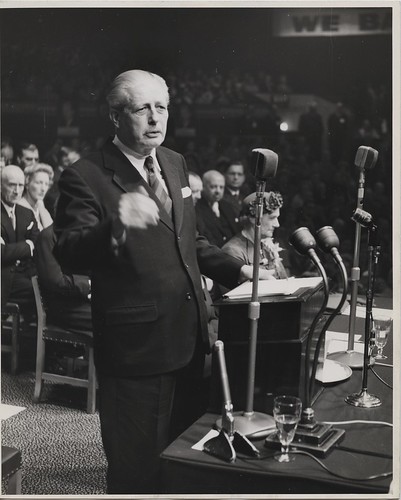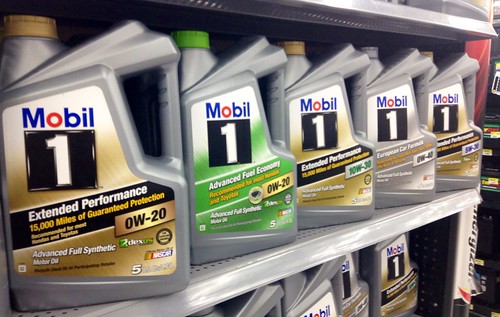January 2025 newsletter introduction
Welcome to my January 2025 newsletter, this newsletter marks my 18th issue. As a child 18 represented experiences denied. 18 and R18 in the UK and Ireland is broadly equivalent to Hong Kong’s ‘category III’ or the US R and NC-17 ratings. This was prior to the Marvel universe infantilising adult cinema.
18 is considered lucky in both Chinese culture and numerology. Talking of lucky, January 29th sees the lunar new year, which will be the year of the snake. According to Chinese horoscope, so 2025 should be a good year for my Chinese horoscope sign in terms of professional and financial areas. Here’s hoping.
New reader?
If this is the first newsletter, welcome! You can find my regular writings here and more about me here.
Things I’ve written.
- Japan Re-Emerges + more things – if nothing else visit this post for Ulrike Schaede’s talk on Japan’s reinvention over the past four decades.
- Interpublic acquisition by Omnicom – a slow read, rather than a hot take. It got a bit of traction when I published it thanks to Stephen Waddington for sharing it on his Facebook group House of Marketing and PR
- Foreign workers + more stuff – a mix of stuff from around the web including a documentary on how Filipino, Indonesian and Burmese domestic workers in Singapore have banded together to found a mutual support community around a shared love of roller-skating.
- CNY 2025 – a round-up of ads and observations in the run up to the year of the snake. I haven’t written this as an article on LinkedIn this year, as LinkedIn’s video embed function no longer seems to work properly in articles.
Books that I have read.
- I managed to finish The Peacock and the Sparrow – IS Berry drew on real-world events such as the Arab Spring political movements and the Fat Leonard scandal to provide a story that moves between Bahrain to Cambodia and back. There was also a universality to the book, for instance it captured that worst excesses of the expat experience that resonated with my own experience and was something I sought to studiously avoid when living in Hong Kong. I was surprised that the book implies that the post-petroleum phase of Bahrain’s development, seemed to happen so abruptly. This was at odds with the gradual decline in petroleum production that we’ve seen in North Sea oil production and mid-west oil fields prior to fracking. Bahrain is a former petro-state that has now pivoted to Gulf area tourism and related services industries.
- Karla’s Choice by Nick Harkaway. I am skeptical of works that look to fill in the universe created by a deceased writer. Christopher Tolkien’s efforts were as much an academic study of JRR Tolkien’s archive curated for the completist reader. Ian Fleming’s James Bond franchise was overrated when he was still alive. It didn’t merit the ten authors that have worked on expanding the book canon to date. John Gardner’s own enjoyable character Boysie Oaks, (similar to Len Deighton’s protagonist in The IPCRESS File) was overshadowed by Gardner’s stint writing Bond books. Nick Harkaway’s book pleasantly surprised me. Harkaway’s real name is Nicholas Cornwell and he was the son of David Cornwell aka John Le Carré. He literally and figuratively grew up as his father wrote the great George Smiley trilogy (Tinker, Tailor, Solider, Spy; The Honourable Schoolboy and Smiley’s People) and the BBC adaptations. Karla’s Choice feels and reads ‘right’ and slots neatly into the Le Carré lore. I can highly recommend it as a read. Despite it being a period piece, Russia’s resurgence gives it a strong sense of zeitgeist.
- Palo Alto: A History of California, Capitalism, and the World by Malcolm Harris. Harris’ book is curate’s egg. On one hand it’s is a politically left polemic by the author on how the world is based on slavery, genocide and other forms of exploitation – which manifested in the authors trauma of a privileged upbringing in Palo Alto. Amongst all this Harris manages to write a Bay Area history that surfaced nuggets that I didnt know from the range of previous books on the area that I had read. Included in them is quotes from Silicon Valley pioneer Wilf Corrigan on offshoring chip manufacturing and packaging. It’s an oddity. If you like left leaning political theory, or a history of technology buff who is prepared to wade through the editorialising it might be worth your while.
Things I have been inspired by.
The Sun Also Rises, But Not on Magazines
There are times when you reach a personal tipping point in your view on something. It can feel shocking, nauseous in a visceral way. I have only been there a few times.
With the dot com boom it was talking with financier at an incubator fund sometime in April 2000. Pegasus Research’s iconic quantitative research on ‘burn rates’ had been published a month earlier and had started to become more known if one read around enough. So I asked him how they thought that they would be making money and his response was:
Ged, I am really surprised that you asked me that. Don’t you realise, we’re trying to move at ‘internet’ time. We’ll think about monetising it later on.
With some notable exceptions like Monocle magazine, print media has been struggling.
Over the Christmas period I was reading the January / February 2025 edition of Wired magazine (published by Condé Nast). Right from unwrapping the magazine from its postage packaging something felt wrong. The magazine felt light; very light. Thankfully the print stock and graphic design was up to its usual standards. So I did a quick page count and noted the number of advertisements in the magazine.
- 88 pages
- 5 adverts from paying advertisers
- 3 adverts from Condé Nast
- 1 advert for the NAACP (National Association for the Advancement of Colored People). The advertising space might have been donated by Condé Nast
I was alarmed at the decline. Seeing declining magazine media spend on slide ware is different to feeling it happen on a publication that you loyally subscribe to. Thankfully my other usual print magazines Monocle and Japanese style magazine HailMary don’t seem to have had a similar exodus of advertisers yet. But it put me on alert about the precarious health of magazine print adverts as a medium. Creative magazine print done right can provide experiences that TikTok can’t.
- Think about the size of visual real estate
- The tactile experience of the page which helps with memory formation
- Being able to smell a product fragrance on the page
- Sampling opportunities
- The ambient reach of re-reading or being left in a shared environment
- Creative offline to online linkages
For the right brands it offers targeted upper funnel experiences that can then be reinforced digitally.
Which brought me to Ernest Hemingway’s novel The Sun Also Rises as I groped around in my head trying to find the words to explain what was happening to magazines as a advertising medium:
“How did you go bankrupt?” Bill asked.
“Two ways,” Mike said. “Gradually and then suddenly.”
The value chains driving the creator economy.
I spent some time during Christmas reading Influencer marketing unlocked: Understanding the value chains the paper was written by 15 academics following the 12th Triennial Invitational Choice Symposium held at INSEAD’s Fontainebleau site. Having worked on influencer campaigns on and off for the past two decades I was curious to see what progress had been made in the thinking underpinning influencer marketing.
Measuring ROI is still complex, as are the challenges that influencers face balancing ‘editorial’ integrity with promotional content.
Brands continue to struggle with measuring ROI beyond short term metrics and puts a focus on engagement. Metrics on long term impact (if any), sales and profitability are insufficient. The authors recognised that there were gaps in proving causation between engagement and sales or long term brand equity.
There is still work to be done understanding the marketing impact of influencer marketing on both influencer and brands including:
- Customer acquisition, retention and lifetime value
- How can authenticity be maintained in paid promotions
There is still the tension between brands need to qcquire and develop customers vs. influencers own need to cultivate ‘follower equity’. Influencers also depend on their relationship with the platforms they exist on, which can snuff them out if they no longer fit the ad revenue created vs. the revenue the influencer gets through promotions. Platforms boost influencers until a certain point and then limit their reach to maintain control.
China’s ‘closed loop’ ecosystem was considered to be more effective. This is platforms such as Douyin (TikTok’s Chinese market twin) and Pinduoduo aka ‘together, more savings’ seem to do better due to tight integration between content and commerce. Then there is the live-streaming business which is basically QVC on social media. TikTok and Instagram Commerce are still playing catch-up. Chinese influencers are thought to have a lifecycle of up to five years, which is why MCNs use an ‘idol’ development model.
Creative consistency
Creative consistency was one of 2024’s marketing efficiency tenets thanks to research conducted by System1. System1 studied how consistency affects creative quality, stronger brands and greater profits.
When comparing the most to the least consistent brands, analysis found that a higher proportion of consistent brands reported larger sales value gain, market share gain and profit gain.
Chart of the month: decline in digital health investment
The FT published an article just prior to JP Morgan’s annual Healthcare conference. The article put some sober perspective on the current state of investment in digital health innovation.
Things I have watched.
E.T. – The Extra Terrestrial – I hadn’t seen ET since I watched it as a child in the cinema. Watching it again as an adult was like watching a different film. From the atmospheric introduction prior to the stars cape onwards, it felt emotionally heightened, with more of a direct line back to Spielberg’s earlier Close Encounters of The Third Kind in terms of look-and-feel. There were references that I didn’t get at the time (for instance takeaway pizza and Reese’s Pieces weren’t really a thing in the UK). I got to appreciate Spielberg’s use of distraction, light and colour grading as an adjunct to storytelling. Finally, the shameless product placement surprised me. 1980s America was a very consumerist society with ultra-processed food that would cause convulsions in The Guardian newsroom – but the product placement was far less subtle than modern Korean dramas. I could see why Hershey’s Reese’s Pieces got an apparent sales uplift from the film.
Bangkok Dangerous – A Thai take on Hong Kong’s ‘heroic bloodshed’ genre emblematic of John Woo films. The directors Danny and Oxide Pang are better known for horror film The Eye. Bangkok Dangerous feels more alive than its Hong Kong peers thanks to Danny Pangs editing and Oxide Pang’s over-saturated colour grading. The brothers careful use of cinematography, inventive storytelling and sparse dialogue make this debut film film feel so polished. Finally, the brothers manage to make city the star, in a similar way to Wong Ka-wai’s films in Hong Kong.
Persepolis – A film adaptation of Marjane Satrapi’s autobiographical graphic novel published in two volumes Persepolis and Persepolis 2. Persepolis tells the story of Marjane’s life from childhood in Paris and pre-revolutionary Iran, how she experienced the revolution. She was sent away by her upper middle class family to Vienna for secondary school. Afterwards she went to university in Iran, was treated for depression and attempted suicide. The story ends as it began with Marjane returning to Paris. The film is true to the graphic novel in terms of style – think a modern-day Tin Tin. Like the book, the story is an emotional rollercoaster ride. It’s subject matter feels equally relevant now, as is did when Satrapi originally wrote her story.
Useful tools.
Advertising awards list
Probably not that useful for me at the moment, but The Thought Partnership have put together a list of awards listed by entry deadline covering the whole of 2025, which should be handy for advertising, marketing and public relations agency marketers.
Adobe Acrobat Pro alternative
Adobe Acrobat Pro is a useful piece of software, but it’s not worth almost £20 / month. PDF Reader Pro gives you a lifetime licence for the same functions for a one off payment of $25.
Long term tracking
Use Apple AirTags but have battery charge anxiety because you forget when you put the battery in? I know I did for the one in my travelling IT kit bag. And I found a solution. Elevaton Lab’s TimeCapsule 10-year battery case. its a two-piece black plastic slap held together by screws. Inside a couple of Duracell AA batteries will give a decade of operation for your AirTag. Sparingly use a little bit of gasket maker on the two halves seams and LocTite Threadlocker on the screws gives you a nigh indestructible tracking module.
The sales pitch.
I am now taking bookings for strategic engagements; or discussions on permanent roles. Contact me here.
More on what I have done here.

The End.
Ok this is the end of my January 2025 newsletter, I hope to see you all back here again in a month. Be excellent to each other and onward into the year, and for those of you celebrating the lunar new year on January 29th 恭喜發財 (Gong Kei Faat Choy).
Don’t forget to share if you found it useful, interesting or insightful.
Get in touch if there is anything that you’d like to recommend for the newsletter.













